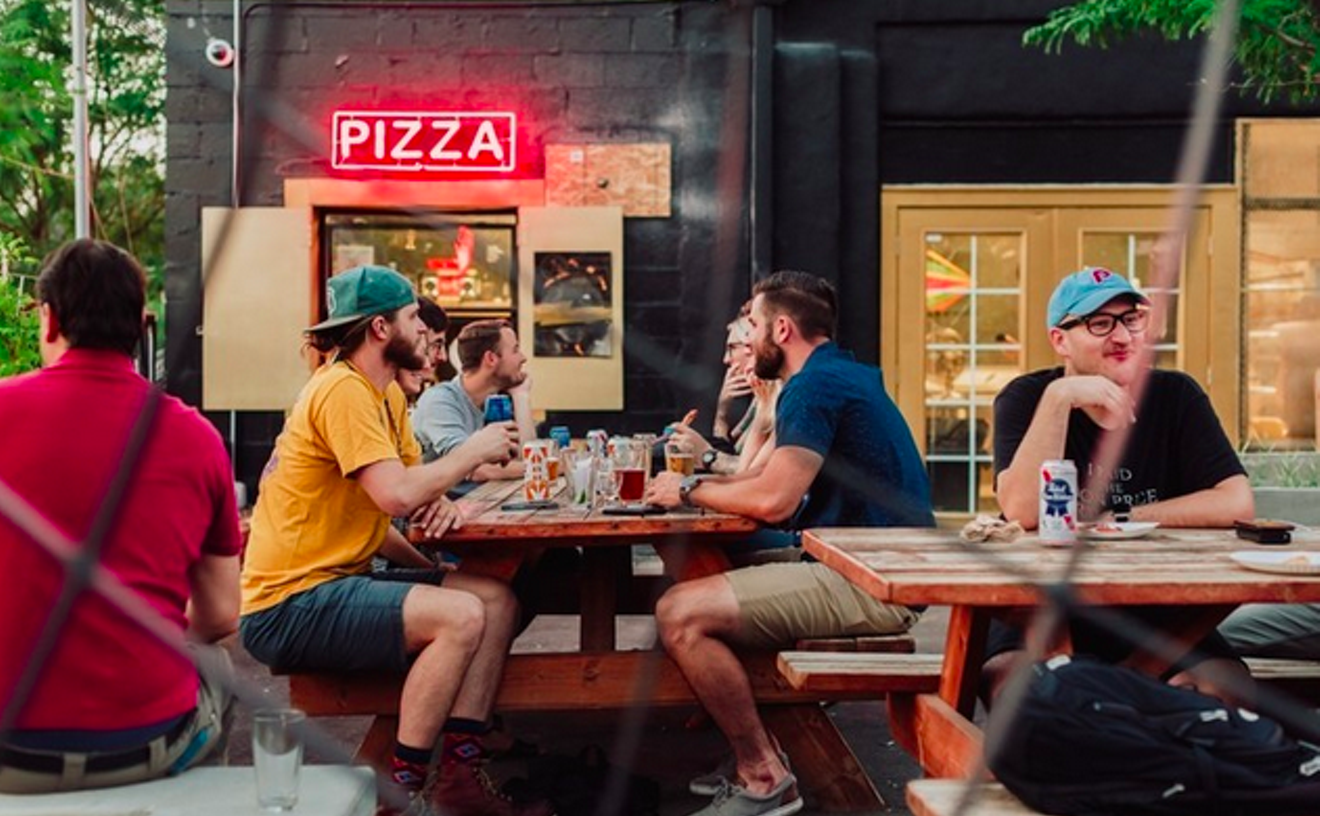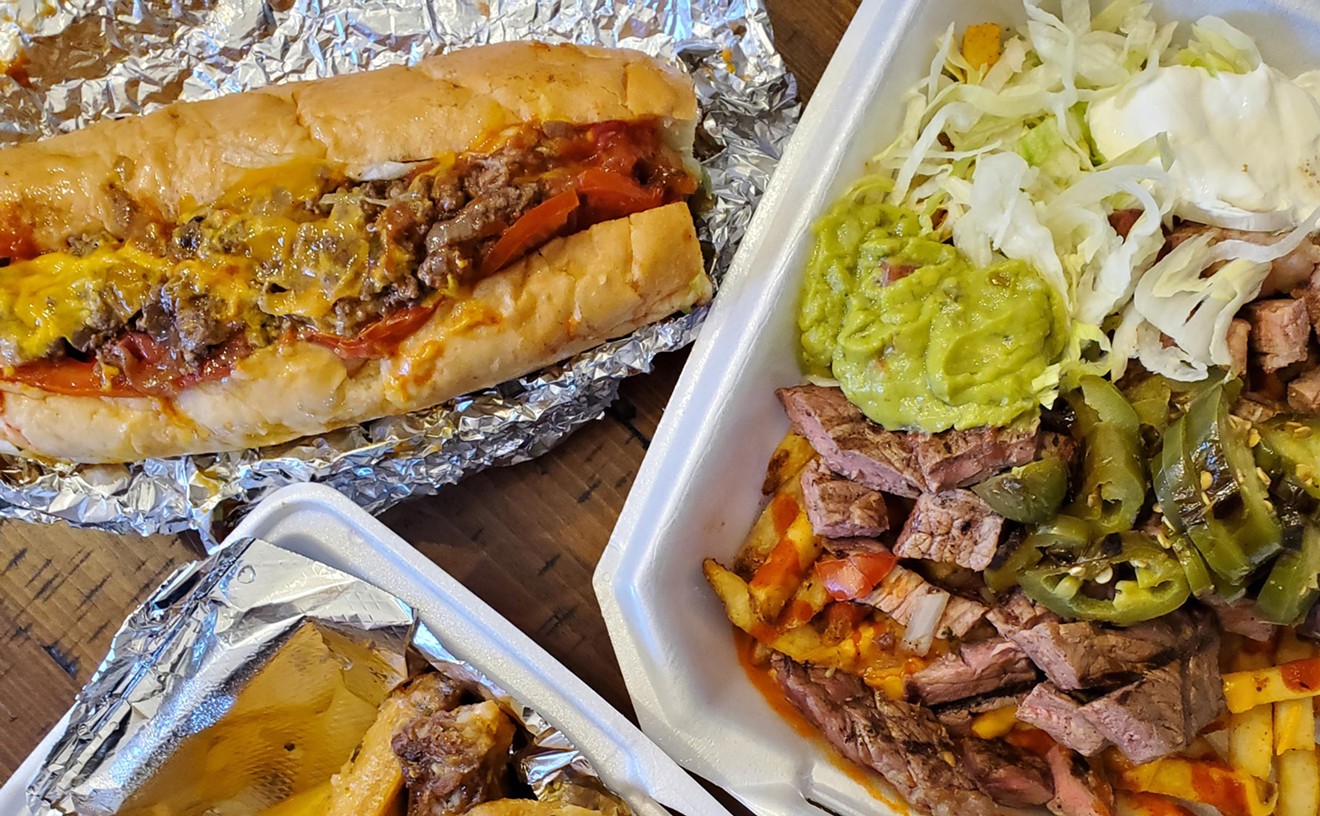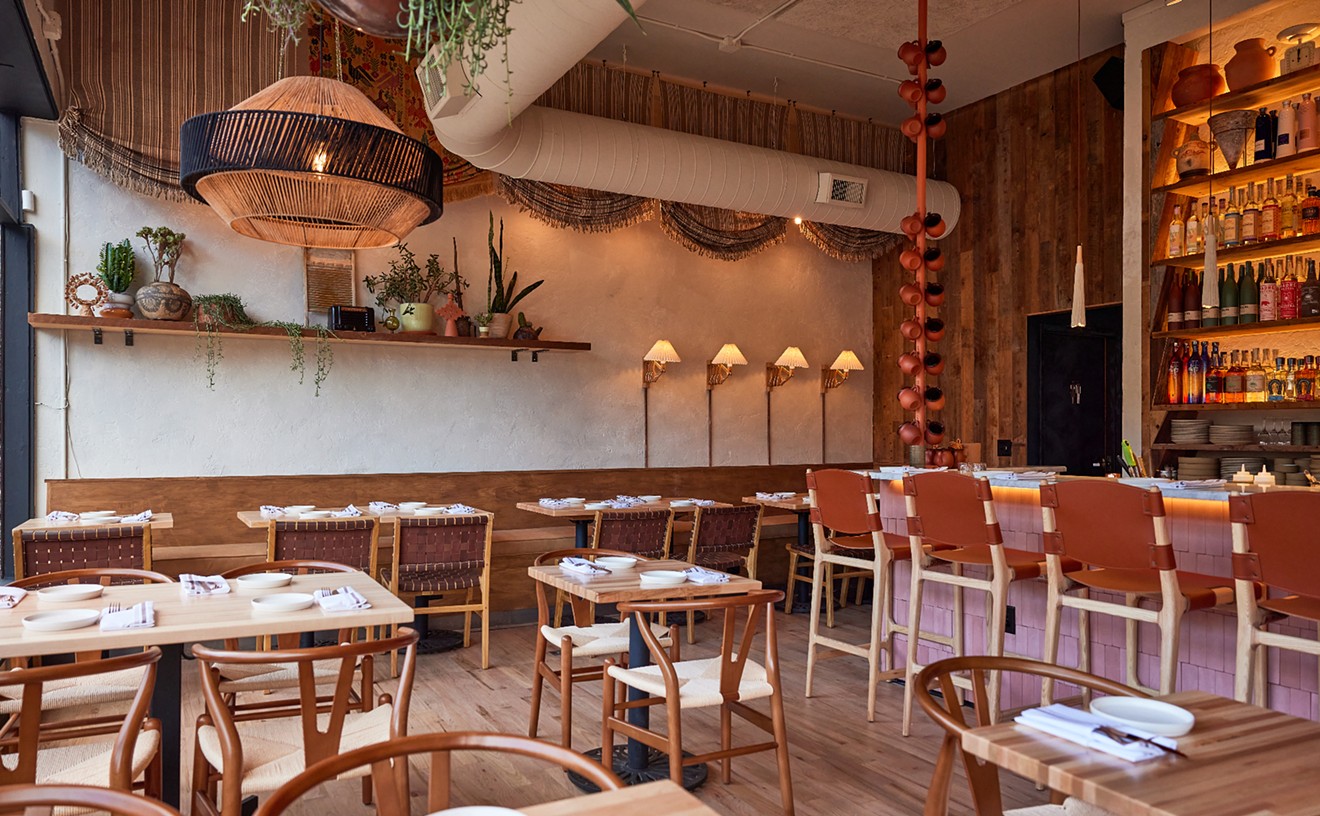To this day (obviously), I still think about that plate. I've collected stories about how, with fresh, nuclear wasabe in the coolers and a hankering to do something with roti-style pastry, Long came up with the PB&J idea on the golf course, just a few hours before service, and phoned it in to his kitchen; stories about how he took the appetizer off the menu after he read my review because by then it had served its purpose ("Someone got it," Long reportedly said). The PB&J was replaced on the board by a plate of geometric gelees (a sphere, a cube and a pyramid) all made of seawater. There are moments of pure batshit crazy in Long's work, which is why I like the guy so much.
Other plates have hung doggedly with me through the hundreds of forgettable meals I eat every year, etched forever in fire onto the big menu in my brain. The potato gnocchi in crab and lobster sauce at Luca d'Italia, mussels at Le Central, three cheeseburgers at Bud's Bar in Sedalia, sea turtle soup at Ocean City, and one perfect piece of fish in lemon and butter, mounted on a side of simple braised spinach, served to me off-menu by Tyler Wiard at Mel's Restaurant and Bar when he knew I was there looking for comfort, not to dine.
But a single appetizer-plate PB&J, deconstructed and redefined, delicious, intellectual, whimsical, smart -- that's what I'm talking about when I refer to the necessary revolutionary spirit of New American cuisine. And Long is the kind of chef I have in mind.
In his book The Soul of a Chef, Michael Ruhlman (probably the best food writer today who's not actually a full-time food writer) writes about the month he spent with Thomas Keller at the French Laundry. He lived in a room above the office, talked to everyone, pitched in when needed, ate -- and came out with a book which was considered nigh-biblical in non-classical kitchens: The French Laundry Cookbook. I've destroyed no fewer than three copies of that tome myself, working them to death in my own kitchens before leaving them behind when I moved on. And I think it's strangely appropriate that since I'm no longer in the kitchens, I no longer own a copy, but do have The Soul of a Chef -- Ruhlman's book about the writing of the cookbook -- sitting on my shelf at home.
In one chapter, Ruhlman writes about Keller's three top guns: Grant Achatz, Greg Short and Eric Ziebold. They were young guys, none out of their twenties (two of them not out yet), working at the hip and heel of the master -- the best, brightest hope of New American cuisine. Ruhlman asked them about food and their particular passions, expecting long, flowery dissertations about haute cuisine, exotic ingredients and their own blossoming skills in response.
But that's not what he got. Achatz was prepping the Laundry standard, fish and chips (actually red mullet with Italian parsley coulis, palette d'ail doux and handmade garlic chips, but whatever), and rather than loving up the fish, the complex preparation or Keller's genius, Achatz talked about the spiritual benefits of chopping shallots for his mise en place by hand rather than dumping them in the Robot-Coupe and pulsing them into wreckage, as is the standard prep at nearly every other restaurant. The Robo can reduce several pounds of shallot bulbs to an irregular chop in about five seconds; doing it by hand takes half an hour. Which means an extra half-hour added to a prep schedule already full of things like palette d'ail doux and boning out fresh mullet, which means coming in a half-hour early every day to get it done. Using a food processor doesn't hurt the shallots, but the results are uneven, imperfect. "It wouldn't necessarily affect the food," Achatz said, "but it affects your psyche. If you take a half-hour to chop shallots, you're going to make sure they don't get wasted."
Short was making squab sauce when he talked about his past -- from Bozeman to architecture school to the Culinary Institute of America to the Laundry -- and Ruhlman noted how he strained the sauce as he spoke, pouring it from one steel bowl through a chinois into another steel bowl, then getting up, washing the bowl and chinois, and repeating. By the time Ruhlman's account ended, Short had strained this single sauce more than twenty times -- until it passed through the chinois without leaving a single trace of sediment. Until it was perfect.
Ziebold -- who'd eaten at Alain Ducasse in Paris, done a stage at Taillevent and was Keller's sous -- was cleaning cutting boards and picking up cigarette butts in the parking lot while he gabbed with Ruhlman. It was his day off. And what he wanted to talk about was wiping down the oil bottles every night.
"Oil bottles? So they've got oil on them -- does it matter?" Ziebold asked. "You just pour oil into a pan; it's not going to affect the food. The bains in the sink with the spoons and whips -- does the water need to be clean? No. And pretty soon you start to do it with the food."
But he wiped down the oil bottles because Keller wiped down the oil bottles, because it mattered, because if there was oil on the bottles, the oil got on your hands and then on the plates -- greasy little fingerprints baked on by the heat of the top broiler or warmer.
Ruhlman, once more: "I had been by this point in numerous kitchens, spoken at length with scores of chefs, cooked with and for some of them. Many, when you got them really engaged and excited about what was important, talked about exotic foods like foie gras, truffles, or clever preparations such as sauces made from reduced vegetable juices and spices, and infused oils. At the French Laundry -- which served a ton of truffles and foie gras, which reduced carrot and beet juices to use for sauces, which made a dozen or more infused oils -- the best cooks in the kitchen talked about cleaning oil bottles, how to cook a green vegetable, how to strain a sauce, and the effects of chopping shallots for your station by hand."
The details always matter, but especially when you're talking about New American -- this upstart cuisine, this essential refutation of the accepted truth that all great food in the States begins and ends somewhere else. So whether you're assembling a PB&J sandwich in Littleton, prepping fish and chips in Yountville or botching a goat-cheese-and-orzo salad in Lakewood, the little things count. For New American cuisine to survive, it cannot simply be good enough. Just to be taken seriously, it must be better than everything else out there.
Yeah, that's rough, but like the man says, war is hell.
Write stuff redux: I eat a lot throughout the year, and during Best of Denver season, I eat like a man possessed -- chasing off after barbecue in West Crested Bumblefuck and eating more tamales than can possibly be healthy for a man of my stature and ethnic biology.
But John Mariani, food editor at Esquire, puts me to shame. When the last thing I want to do on some rainy Saturday is drive an hour and a half to some joint with a reputation for having the best duck liver in the state, I think of Mariani and realize that things could be worse. I could have to get on a plane and fly to Radium Springs or Hog's Knuckle or Omaha looking for that duck liver, only to discover that it's not really very good after all, but just another example of obsessive local boosterism.
For this month's "Best New Restaurants" issue of Esquire, Mariani ate 356 meals across the country. That's a meal a day, every day, all year, in dozens of cities, with only nine days off. That's insane. And what's more, the list was eventually winnowed down to just 21 restaurants deserving of Mariani's praise (plus a few mentioned in sidebars, including Pat's Roosterante in Craig, which made the list of "Best New Restaurant Names"). In comparison, I am a total pussy.
Fortunately, this year Mariani's travels took him to Denver and to Table 6, which ranks among the year's 21 best alongside such hot boîtes as Rathbun's in Atlanta, Megu in New York and Philly's Bliss. "This small neighborhood restaurant has charm to burn" quoth the big man, singling out Table 6 chef de cuisine Aaron Whitcomb -- the protegé of Adega chef/owner Bryan Moscatello -- for his menu of "pure homemade goodness." And bingo, Whitcomb is now a star in his own right.
In addition to praising Table 6's beet bisque, apple-brined brisket and artisan s'mores, Mariani also offered a canonical sidebar on all things culinary that should be subject to a thousand-year ban: low-carb pasta, communal tables (my own nightmare-dining scenario), raw food, beet-and-goat-cheese salads, crème brûlées made from anything but crème and, of course, Rocco.
Also in the national eye this week is Luca d'Italia, with a review of Frank Bonanno's casual-chic temple to fine dining eye-tie style appearing in the Best Food Writing 2004 compilation just out under the Avalon imprint and available in fine bookstores everywhere. The piece is long and rambling, full of bad language, pointless literary discursions and disgustingly graphic descriptions of the effects of terminal truffle narcosis on the human body. But then, I wrote it, so would you really expect anything less?
Pikers can read my review ("Way to Go," September 25, 2003) in the online archives at www.westword.com, but you really should buy the book. I don't get paid any extra if you do, and the thing is crammed with the work of about fifty other great writers, most of whom actually talk about the food -- unlike yours truly.










